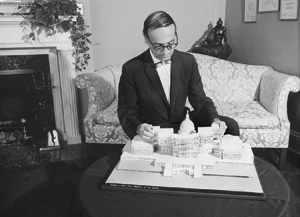There had not been a practicing architect as Architect of the Capitol for some 100 years when George M. White took the post in 1971. But during his 25-year term, the former American Institute of Architects' vice president also used his electrical engineering, business and law training to manage large congressional and other U.S. building projects as well as steer design and project management in new directions that were not always supported by industry or his Capitol Hill bosses.

White died on June 17 in Bethesda, Md., of complications of Parkinson's disease at age 90.
White, the last AOC named without Senate approval, created the first master plan for the U.S. Capitol complex.
Soon after his arrival, he also had to manage the repair of bomb damage to the Capitol building caused by the Weather Underground as well as controversy over the structure's crumbling front facade.
The architect, who practiced with his father in Cleveland, defended the new Hart Senate Office Building design, which some considered drab, as well as cost overruns on some projects and use of then-unorthodox approaches such as “phased construction.” One congressman sought his resignation (ENR 5/12/83 p. 28).
White said it was “horribly inappropriate” to worry about architectural styles on Capitol Hill, where “you [can't] tear down buildings every 30 years.” But his use of a private-sector lease-purchase scheme for a $127-million building and the AOC office's on-budget completion of the west front facade won kudos. He earned AIA's Thomas Jefferson Award in 1992 for public architecture.
“[White's] position was that architecture is the only construction discipline that concerns itself with aesthetics,” said AIA President Clark Manus in a statement. “George White worked tirelessly to preserve (the Capitol building] and the history it contains,” said Stephen T. Ayers, current Architect of the Capitol.





Post a comment to this article
Report Abusive Comment